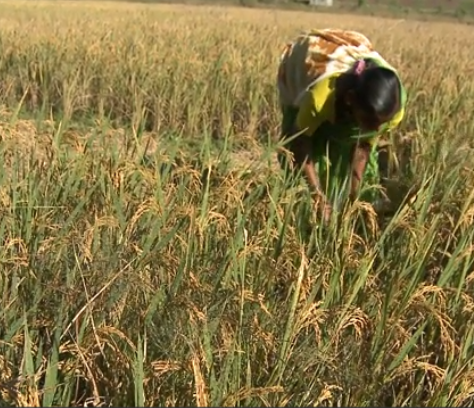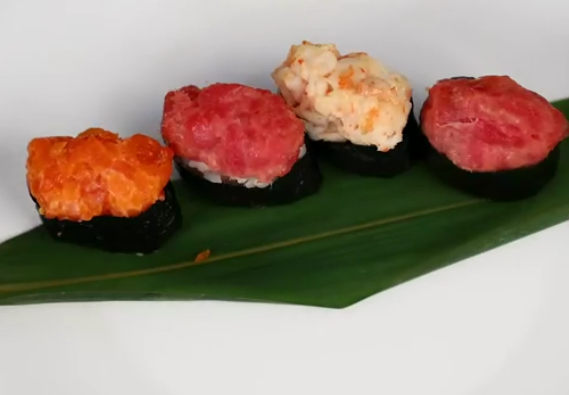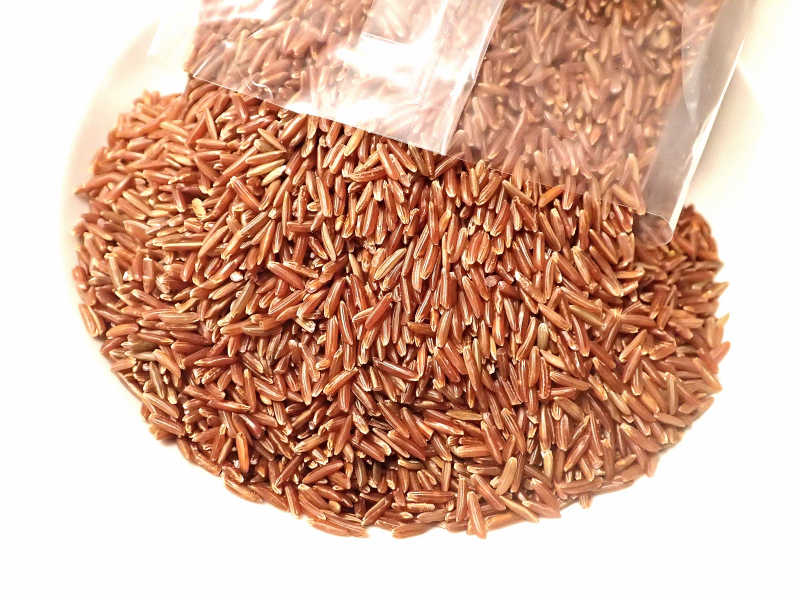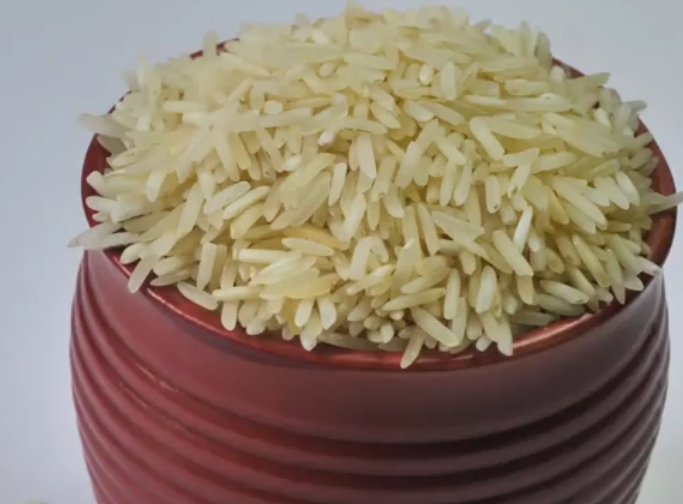The colour of the rice grain is determined by the pigmentation of certain phytochemicals. In the rice ( Oryza sativa ), most of the varieties have white grains, but some have brown, red or black grains. The colour of red rice is due to the deposition and oxidative polymerization of proanthocyanidins in the pericarp, while the colour of black rice is due to the deposition of anthocyanins (1).

Red or pigmented rice (Oryza longistaminata and Oryza sativa var Selvatica) is a perennial species of wild rice originating in Africa and containing anthocyanins and proanthocyanidins concentrated in the bran layer.

It also contains flavonoids derived from vitamin E, gamma oryzanol, proanthocyanidins and anthocyanins.

Very resistant to pests and diseases, until recently it was considered a weed and was frequently removed.
Rice is a grass and one of the most common and oldest foods. Just think that its history dates back 7,000 years.
It is harvested from September to October from a small plant called Oryza, which is fed by flooded soil.

The genus Oryza has many species, here some of the best known:
- Oryza sativa, white rice grown all over the world
- Oryza glaberrima, cultivated in Africa
- Oryza officinalis, cultivated in Vietnam
- Oryza australiensis, cultivated in Australia
- Oryza rhizomatis
- etc.
Italy is the first European producer with crops in the provinces of Vercelli, Novara, Pavia, Biella, Milan, Lodi and others.
The rice is composed of the grain and its husk and husk wrapper.
Once harvested, it is not edible and must be worked to remove the husk and other parts.
After the processing that is called dehusking you get the
Wholemeal rice, with a subsequent refining process, is used to produce the
The varieties of rice are numerous, over 100,000 and each has different taste and cooking times.
In general, rice contains more than 100 bioactive substances mainly in its bran layer including phytic acid, isovitexin, gamma-oryzanol, phytosterols, octacosanol, squalene, gamma-aminobutyric acid, tocopherol and derived from tocotrienol (2), antioxidants.
It does not contain beta carotene (provitamin A) and has a very low iron and zinc content (3).
In rice bran there are bioactive phytochemicals that exert protective actions against cancer that involve the metabolism of the host and the intestinal microbiome. A diet based on rice bran has shown positive effects in reducing the risk of colon cancer (4).
Rice studies
Allergies: Be careful, rice contains a certain amount of lactose, a component that can give intolerance.
The most common types of rice used are :
- Arborio : large grains, the most common in Italy
- Ribe : elongated grains.
- Thaibonnet : medium, elongated and fine grains
- Rome : large grains
- Basmati : thin and elongated grains. Grown in Pakistan and India
- Carnaroli : large grains
- Vialone nano : large, round grains
- Original or Balilla : small round grains
- Jasmine : fine grains of Asian origin
- Red : red, small and narrow grains
- Wild : Zizania palustris
- Baldo : large, shiny grains
- Ganges : from India
- Footboard : releases a lot of starch
- Venus : from China and the Po Valley
- Patna : from Thailand. Long and narrow grains
- Sant'Andrea : Thick and long grains. Releases a lot of starch
Rice viruses and pests: Pseudomonas aeruginosa, Rice yellow mottle virus, Magnaporthe oryzae , Rice Tungro Bacilliform Virus , Lissorhoptrus oryzophilus Kuschel, Oebalus pugnax, Xanthomonas oryzae
References________________________________________
(1) The Birth of a Black Rice Gene and Its Local Spread by Introgression
Tetsuo Oikawa, Hiroaki Maeda, Taichi Oguchi, Takuya Yamaguchi, Noriko Tanabe, Kaworu Ebana, Masahiro Yano, Takeshi Ebitani, Takeshi Izawa
Plant Cell. 2015 Sep; 27(9): 2401–2414. Published online 2015 Sep 11. doi: 10.1105/tpc.15.00310
(2) Bidlack W. Phytochemicals as bioacive agents. Lancaster, Basel, Switzerland: Technomic Publishing Co., Inc; 1999. pp. 25–36.
(3) Single genetic locus improvement of iron, zinc and β-carotene content in rice grains. - Singh SP, Gruissem W, Bhullar NK. - Sci Rep. 2017 Jul 31;7(1):6883. doi:10.1038/s41598-017-07198-5.
(4) Modulation of plasma and urine metabolome in colorectal cancer survivors consuming rice bran. Zarei I, Oppel RC, Borresen EC, Brown RJ, Ryan EP. Integr Food Nutr Metab. 2019 May;6(3). doi: 10.15761/IFNM.1000252.
![]() Red rice
Red rice 





